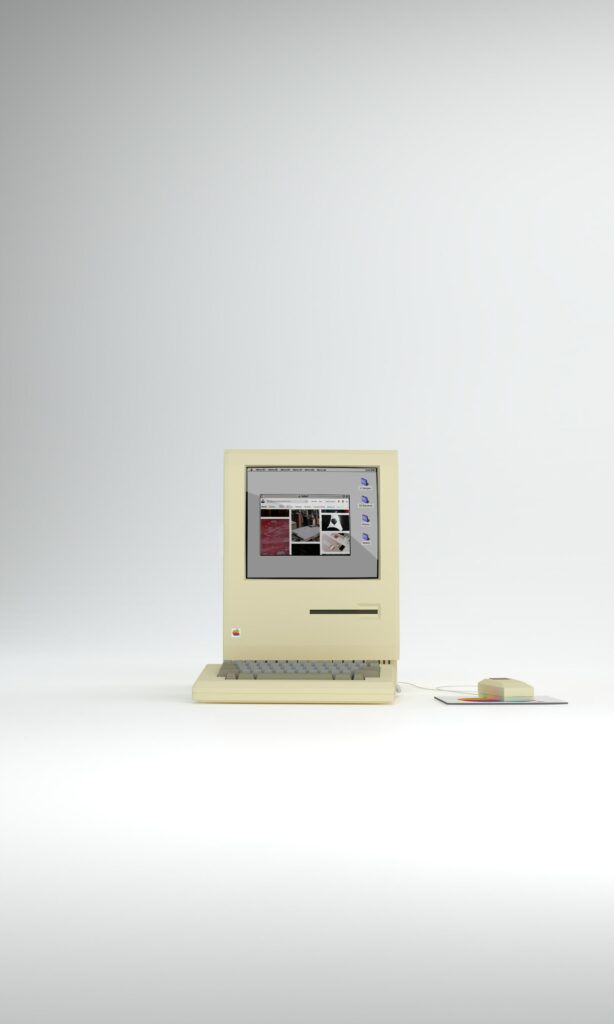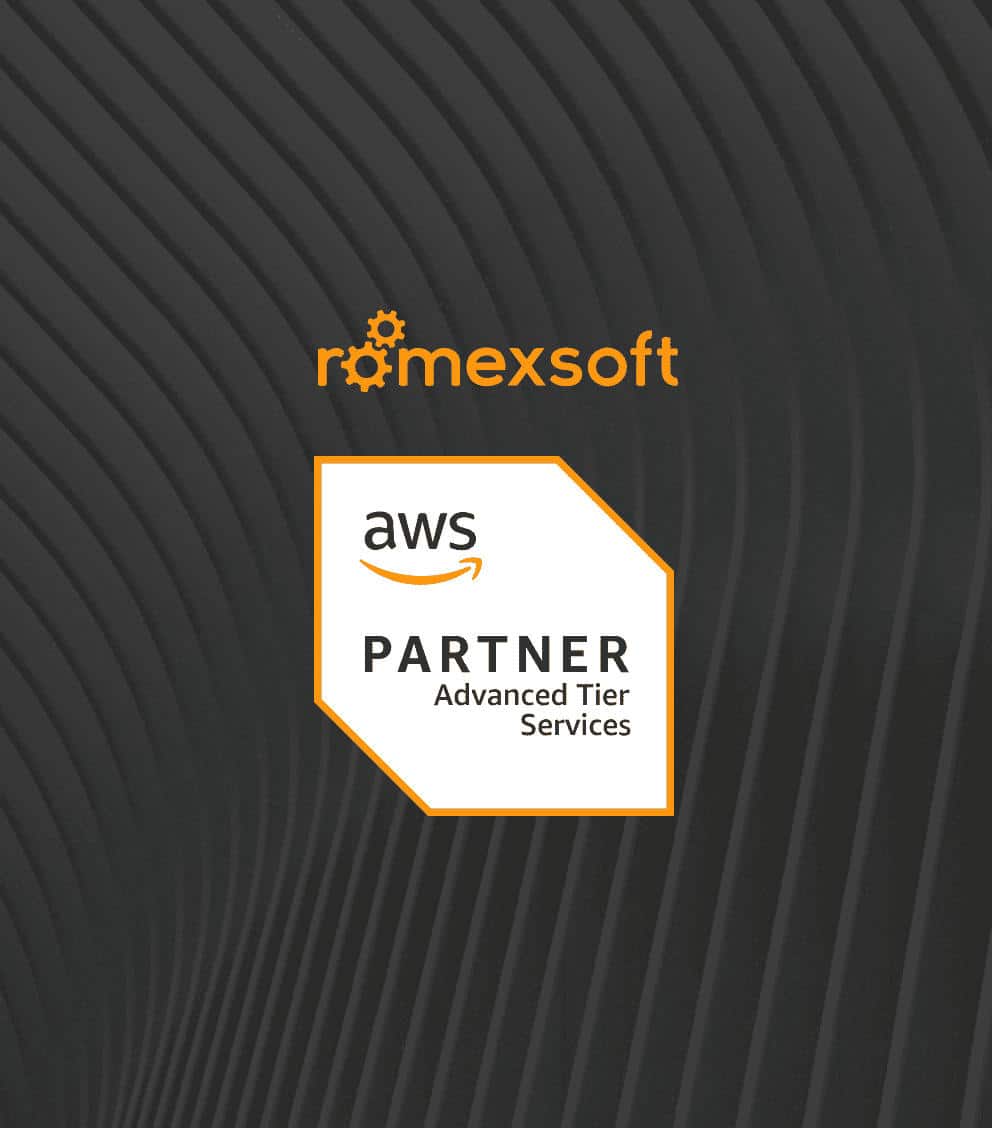Healthcare Software Modernization Best Practices Guide
Modernizing healthcare software is an imminent step for those organizations that struggle with outdated legacy systems, resulting in high maintenance costs, security flaws, ineffective workflows, and limited interoperability – problems that can jeopardize patient care and compliance. The article will shed light on how these challenges can be addressed with healthcare application modernization and highlight practical strategies to create a more patient-centered, agile, and secure healthcare environment.
The blog discusses:
- benefits of healthcare software modernization
- legacy IT systems type
- practices for successful modernization
- challenges and solutions
- healthcare system improvement cases

Table of Contents
Numerous healthcare organizations are facing high maintenance costs, security flaws, ineffective workflows, and poor interoperability – these are just a few most common problems that stem from outdated legacy systems and can impair patient care and compliance. They only await healthcare application modernization.
Known as the process of updating and enhancing legacy systems to improve efficiency, security, and, in the end, patient care, modernization will require either integrating some advanced technologies or replacing outdated components altogether. Ultimately, healthcare infrastructure modernization aims at creating a more reliable and patient-centric healthcare ecosystem.
Table of Contents
How Healthcare Organizations Can Benefit from Software Modernization
Numerous healthcare companies contemplate cloud migration, yet the upsides of this commitment may be unclear. Here are the most considerable benefits of modernization: for more informed decision-making.
- Cost Savings and Optimization
IT costs are drastically reduced when healthcare systems migrate to the cloud. By moving workloads to AWS, for instance, eHealth NSW was able to save more than $25 million by eliminating the need for pricey on-premises infrastructure. Apart from cost-efficiency, migration helps avoid resource waste on the grounds of dynamically scaling capacity in response to demand and removing expenses from unused infrastructure. - Enhanced Staff Productivity
As operational performance improves, so does the personnel performance: modern software has streamlined repetitive processes (e.g., automating data processing and connecting various data sources), which reduces manual labor so that employees may focus on more important, high-value tasks. - Improved Operational Resilience and Reduced Downtime
Cloud-based healthcare solutions provide tools to anticipate and minimize downtime risks and thus significantly reduce interruptions in critical areas like IT systems, industrial processes, and laboratory operations. Better system resilience has a response in patient care by providing constant access to critical services like Electronic Health Records (EHRs). - Improved Data Interoperability and Actionable Insights
Since it necessitates removing data silos, updating outdated systems facilitates the seamless integration of health information from several sources. Such data integration supports individualized treatment plans and educated healthcare judgments. As a result, healthcare providers may more effectively analyze massive datasets with the help of solutions like Amazon HealthLake, which turn unprocessed data into useful insights. - Strengthened Security and Compliance
Strong security measures provided by cloud systems comply with strict healthcare laws such as GDPR and HIPAA. Cloud migration means lowering the risks associated with antiquated, on-premises systems, improving data protection, and receiving higher compliance audit scores.
Types of Legacy Healthcare IT Systems
With a view to improved patient care, performance, and integration, modernizing healthcare software entails updating a number of outdated systems. The following section lists the main healthcare systems that will gain from modernization.
Electronic Health Record (EHR) Systems
It might be challenging to scale or integrate on-premises EHR systems with other systems due to their lack of flexibility and high maintenance costs. As demonstrated by Tufts Medicine, switching to cloud-based EHRs increases dependability and fosters future advancements.
Laboratory Information Systems (LIS)
Comprehensive patient care is likely to be hampered by data silos created by older LIS configurations that frequently function in isolation. The outcome of updating these systems will be that test results are combined with other clinical data to provide a single patient perspective.
Hospital Information Systems (HIS)
Outdated infrastructure that many HIS platforms continue to rely on imposes its limits on agility and cost-effectiveness. Making the switch to cloud technologies will relieve this burden, enhance scalability, and provide improved support for hospital operations, including financial and patient management procedures.
Picture Archiving and Communication Systems (PACS)
Legacy Workflows are slowed down by PACS’s frequent lack of quick picture access and clinical data integration. In contrast, contemporary technologies are capable of cutting down on analysis time and increasing productivity as they improve data communication and picture processing.
Radiology Information Systems (RIS)
Real-time sharing and data integration, much needed in healthcare, are frequent problems with older RIS systems. Modernization will enhance overall care coordination by improving the flow between clinical judgments and diagnostic imaging.
Patient Portals
Poor communication with other healthcare systems and a lack of features are common characteristics of outdated patient portals. However, current digital expectations can be met by the user-friendly, captivating interfaces of modern sites.
Telemedicine Systems
The quality of remote treatment is limited by legacy telemedicine installations, which frequently lack scalability, high-definition video, and secure data processing. It is only by adopting modern solutions that healthcare organizations can provide better service quality for virtual healthcare and facilitate quick expansion.
Claims Processing Systems
While billing efficiency may be impacted by the slow and error-prone traditional claims processing, upgrading and automating these processes will result in improved financial management, simplified operations, and minimized errors.
Best Practices for Successful Healthcare Software Modernization
Any company would like to experience seamless transitions and improved patient results during and after modernizing healthcare software. Such objectives call for careful planning, strong security measures, and agile execution. This section describes best practices for a smooth and successful modernization journey.
Executive-Driven Cloud-First Strategy
Getting solid executive backing to incorporate cloud technologies into your modernization plan is the first step in a successful cloud-first strategy. In practice, it means two things: getting leadership support and coordinating projects with overarching corporate goals. In doing so, a common practice is to create a specialized leadership team of important decision-makers and IT leads to steer the change in order to speed up this process.
Placing leadership involvement first allows for adequate funding and attention, which ensures your organization can adapt quickly to changing business and regulatory requirements.
Embed Robust Security, Compliance, and Data Governance
Prioritizing security and compliance with acknowledged standards is a strong start. Use AWS’s strong security certifications and HIPAA-eligible services to incorporate security and compliance into your modernization plan from the very beginning. This will mean drafting a multi-layered strategy that incorporates identity management, encryption, and ongoing vulnerability assessments.
Meanwhile, the AWS Shared Responsibility Model will define roles and responsibilities explicitly.
A structured data governance architecture that guarantees accountability and control is a proven way to protect important data. As for safeguarding sensitive health information and satisfying changing regulatory requirements, consider automating compliance checks, carrying out frequent audits, and imposing strict data handling procedures.
Ensure Seamless Transition and Business Continuity
One way to guarantee a seamless migration is by establishing parallel operating structures that enable legacy and modern systems to operate simultaneously. This method reduces interruptions as it allows for a gradual transition, real-time integration point testing, and process validation. Then, automated monitoring and fallback procedures further support continuous data flow, which quickly resolve any problems that may occur.
Mapping existing and future data flows is crucial for creating a strong integration layer that seamlessly connects legacy and modern components. This tactic keeps stakeholders confident in steady business operations, lowers downtime, and mitigates hazards.
Accelerate Innovation and Enhance Patient Outcomes
Improving healthcare delivery requires a patient-centric approach. With this in mind, it makes sense to form a holistic picture of patient data. To achieve a comprehensive outlook of the information, dismantle data silos by integrating disparate data sources using tools like HealthLake and interoperability standards like FHIR. This approach streamlines departmental coordination and makes data access easier.
Take advantage of cloud scalability to enable analytics, AI, and machine learning with solutions like SageMaker and Comprehend Medical. These technologies offer valuable insights into patient care, support more precise treatment planning, and ultimately improve patient outcomes.
Execute Incremental Modernization with Agile Teams
Modernization is recommended to occur in stages: the shift of historical monoliths can start with the early transfer of low-risk, high-impact apps. Your organization will benefit from an integration layer that smoothly connects legacy systems with new platforms. A way to do so is to put together cross-functional teams focused on certain business domains and map data flows. This approach reduces the risks connected with significant changes yet yields quick results.
In the meantime of the transition, operational agility can be preserved by monitoring progress with clearly defined KPIs and adjusting your strategy in response to real-time data. In addition to reducing the risks associated with old technology, this agile strategy guarantees that modernization initiatives are in line with business objectives, allowing for a gradual transfer with little interruption.
Key Steps to Modernize Healthcare Systems
Modernizing legacy healthcare systems requires a strategic approach to enhance security, scalability, and data integration. This section outlines essential steps to transition legacy systems to the cloud, unify patient data, and leverage advanced analytics for better patient care.
Establish a Secure and Compliant Cloud Foundation
Establishing a robust security strategy that complies with industry best practices and the shared responsibility model of your provider should be your first step. If data safety is your priority, utilize HIPAA-eligible services and compliance solutions to achieve GDPR, HITRUST, and GxP criteria. Critical health data can be protected by establishing strict access rules, encryption, and API security right away. Being proactive works towards organizational trust and reduces regulatory risks, providing a strong basis for modernization success.
Migrate Systems and Data to the Cloud
The highlights of migrating your clinical or scientific data, infrastructure, and on-premises apps to the cloud are scalability and agility. To effectively manage the access, mobilize, and migrate phases while minimizing risks and interruptions along the way, collaborate with a cloud application migration service provider. If the planned transition is a big-scale one, it may require specialized tools and integration of legacy mainframe technologies. This strategy builds a flexible digital basis for future innovation while speeding up migration.
Unify and Integrate Data
A cohesive view of patient data throughout your organization can be achieved in one step: removing data silos. This will require you to assess current data flows first and standardize and combine different data sources using integration tools. Then you will be able to establish a centralized, secure data lake – of course, following standards like FHIR – that facilitates advanced analytics and interoperability. API management tools like Amazon API Gateway are there to facilitate building, maintaining, and protecting APIs for better care coordination and effective data interchange.
Enable Analytics and Innovation
Massive datasets will require adaptable, economical storage solutions that data warehousing and big data techniques provide. The data can be rich in actionable insights when one applies scalable analytics and machine learning services. More specifically, tools like Amazon SageMaker to implement machine learning models and Amazon Comprehend Medical to evaluate unstructured data can greatly improve diagnosis and individualized care. Using integrated APIs links data to clinical workflows to promote proactive care and improved patient outcomes.
Modernize Legacy Applications
Take a gradual approach to modernization by using techniques like the strangler fig pattern to replace monolithic systems with modular components. The initial move could be mapping out current business processes to identify legacy functions that can be divided and redesigned as microservices. Those can improve scalability and portability if an integration layer leveraging APIs to enable data interaction between legacy and new systems is established. Other benefits of the implementation include automated testing and deployment with CI/CD pipelines to reduce technical debt and expedite the transition.
Address Operational Considerations
Use infrastructure-as-code solutions to expedite deployments and automate infrastructure management. So as to improve the latter, one can ensure system visibility through thorough logging and monitoring, while planning for rapid disaster recovery and high availability. There are cost-effective solutions that assist with the previously mentioned, such as spot instances, utilizing scalable cloud services, and allocating resources in accordance with actual demand. What also impacts efficiency are automated repetitive operations and continual improvement with DevOps techniques to promote teamwork.
Healthcare Software Modernization Challenges and Solutions
Healthcare modernization comes with its inherent challenges, from ensuring business continuity to maintaining data security and compliance. Partnering with a reliable vendor that offers comprehensive healthcare software development services not only overcomes these obstacles as they arise but also helps prevent them.
| Challenge | Practical Solution |
|---|---|
| Ensuring business process continuity. Maintain operations while upgrading systems. | Adopt a step-by-step approach, like the strangler pattern, to phase in new functionality without disrupting ongoing work. |
| Breaking down monolithic applications. Legacy systems are often tightly coupled and complex. | Use domain-driven design to identify independent components and gradually decouple them for modernization. |
| Outdated hardware and software maintenance. Maintaining legacy infrastructure is expensive and unreliable. | Move to cloud platforms like AWS to eliminate hardware dependencies and reduce operational costs. |
| Mapping data flows and ensuring consistency. System interactions and dependencies may be poorly documented. | Create clear data flow diagrams to map out data pipelines, integrations, and transformation logic. |
| Decline in system knowledge and outdated documentation. Institutional knowledge is lost as team members leave. | Interview key stakeholders and technical experts to capture undocumented knowledge and rebuild functional specs. |
Case Studies of Healthcare Application Modernization
Should you wonder how the mentioned best practices apply to real-life scenarios or challenges, read on to discover several compelling use cases of modernizing legacy healthcare systems, drawn from real-world implementations shared by AWS subject matter experts.
Cost Savings and Enhanced Care Quality
The experience of Tufts Medicine demonstrates how big a leap an organization can make by modernizing its infrastructure. More specifically, they successfully moved four million patient records to a safe cloud environment by moving their Epic-based EHR system and forty-two connected apps to AWS over the course of just over a year. They accomplished strong disaster recovery across several AWS regions by removing antiquated data centers and combining 109 patient portals into a single multilingual platform.
Apart from greatly enhancing workflow productivity and patient care, this modernization cut expenditures by 60% and system reaction times to submilliseconds. The example of Tufts Medicine shows how using a cloud-first approach may improve overall healthcare delivery quality, operational flexibility, and innovation.
Operational Efficiency with Predictive Maintenance
Baxter’s modernization approach demonstrates how cloud-based IoT and predictive analytics may help healthcare production. They installed wireless sensors to track temperature and vibration using Amazon Monitron, allowing for real-time data collection and anomaly detection powered by machine learning. What this has resulted in is that about 10,000 patients have benefited from this proactive maintenance strategy, which has reduced manual inspections, prevented about 500 machine hours of unscheduled downtime, and maintained output of almost 7 million units.
This case highlights how using cloud-based predictive maintenance enhances operational effectiveness and speeds up digital transformation, fostering sustainable, high-quality manufacturing in the healthcare industry.
Applying AWS for Rapid Patient Outreach and Engagement
MetroPlusHealth’s prompt action during the COVID-19 epidemic demonstrates the value of contemporary medical software. Using Amazon Lex, Amazon Connect, and Amazon Pinpoint, they worked with AWS to create a chatbot that allows for real-time, tailored outreach to high-risk people. The outcome was that 54,000 members were reached by the chatbot in three weeks, facilitating quicker access to vital social and health services.
MetroPlusHealth raised the bar for quick, effective healthcare response by upgrading its communication strategy with scalable AWS solutions, which greatly enhanced patient involvement and crisis management.
How can Romexsoft Help You Modernize Your Healthcare Systems
Equipped with solid experience and a partnership with AWS, Romexsoft modernizes outdated healthcare systems to make them flexible and cloud-ready. With our healthcare solution development services, we minimize downtime and facilitate a seamless transition for healthcare businesses through comprehensive evaluations and streamlined migrations.
A combination of DevOps procedures, strong security regulations, and microservices architecture will allow you to make the most of real-time analytics and operational effectiveness, while Romexsoft guarantees compliance and data integrity for a better patient experience.
Healthcare Software Modernization FAQ
When an old healthcare system's technology is unable to keep up with the rapidly changing demands of the modern healthcare environment, it has to be modernized. This requirement frequently results from a number of significant obstacles, namely:
- High maintenance costs and increasing security vulnerabilities caused by outdated hardware and software.
- Fragmented or siloed data that hinders efficient access to and integration of patient information.
- Limited agility in adopting new features, which leads to slower service delivery.
- Operational inefficiencies (e.g., frequent downtime and reliance on manual processes), which - negatively affect patient care and productivity.
- Difficulty complying with current regulatory and security standards, putting sensitive patient data at risk.
- Growing patient expectations for smooth, digital, and personalized healthcare experiences that the current system fails to support.
In a healthcare setting that is changing quickly, addressing these problems is essential to preserving high-quality treatment, and this can be achieved through modernizing legacy healthcare systems.
Given the pressure from evolving requirements, one may be eager to commence their modernization journey. Still, before modernizing your healthcare legacy systems, keep the following essential factors in mind:
- Define clear business and technical objectives that support your overall strategy.
- Gain a thorough understanding of your current technology environment, including existing data silos and associated risks.
- Make security and compliance a top priority from the outset to safeguard sensitive patient data.
- Develop a plan for smooth data integration by adopting widely accepted standards such as FHIR.
- Assess ongoing maintenance expenses against the expected cost savings and return on investment.
- Prepare your organization by providing skills training, planning phased migrations, and securing strong executive backing.
- Simplify procurement processes to speed up the adoption of innovative cloud-based solutions.
It is only with the careful consideration of these factors that one is ready to set out on a successful and efficient healthcare modernization journey.
Everything that healthcare systems use in modernizing, such as AI, cloud computing, and sophisticated analytics, is dedicated to improving patient outcomes. Those solutions come in handy with complex illnesses like idiopathic pulmonary fibrosis, which may be diagnosed more quickly and accurately by utilizing AI-powered technologies like image analysis. Only the integration of genetics, clinical records, and imaging data can pave the way to precision medicine and individualized treatments.
Diagnosis and treatment aside, modern, cloud-based systems also provide real-time data exchange through compatible EHRs, which enhances accessibility and care coordination. In the end, this connectedness improves patient safety and overall experience as it decreases medical mistakes and downtime, makes treatment more accessible, and streamlines services like appointment booking. How this occurs is through telemedicine and AI-driven outreach tools, yet it looks smooth and simple from the user’s perspective.
Keeping legacy systems operational through upgrades, bug fixes, and patch management to guarantee reliability is the main goal of healthcare system maintenance.
In contrast, modernizing healthcare systems involves transforming outdated platforms by adopting modern technologies like cloud computing, microservices, and advanced analytics, which are meant to enhance scalability, interoperability, security, and ultimately patient care.





